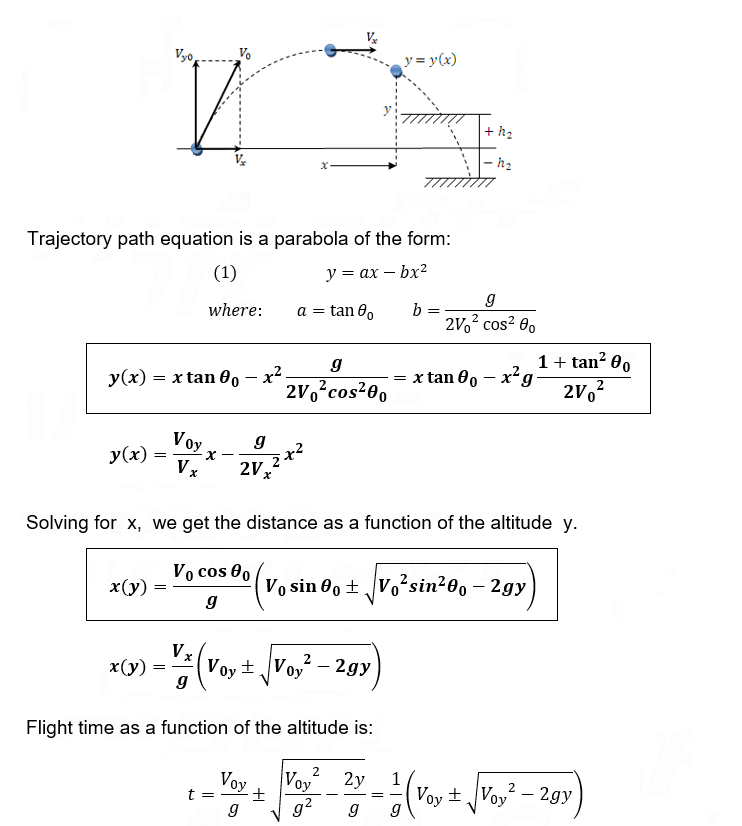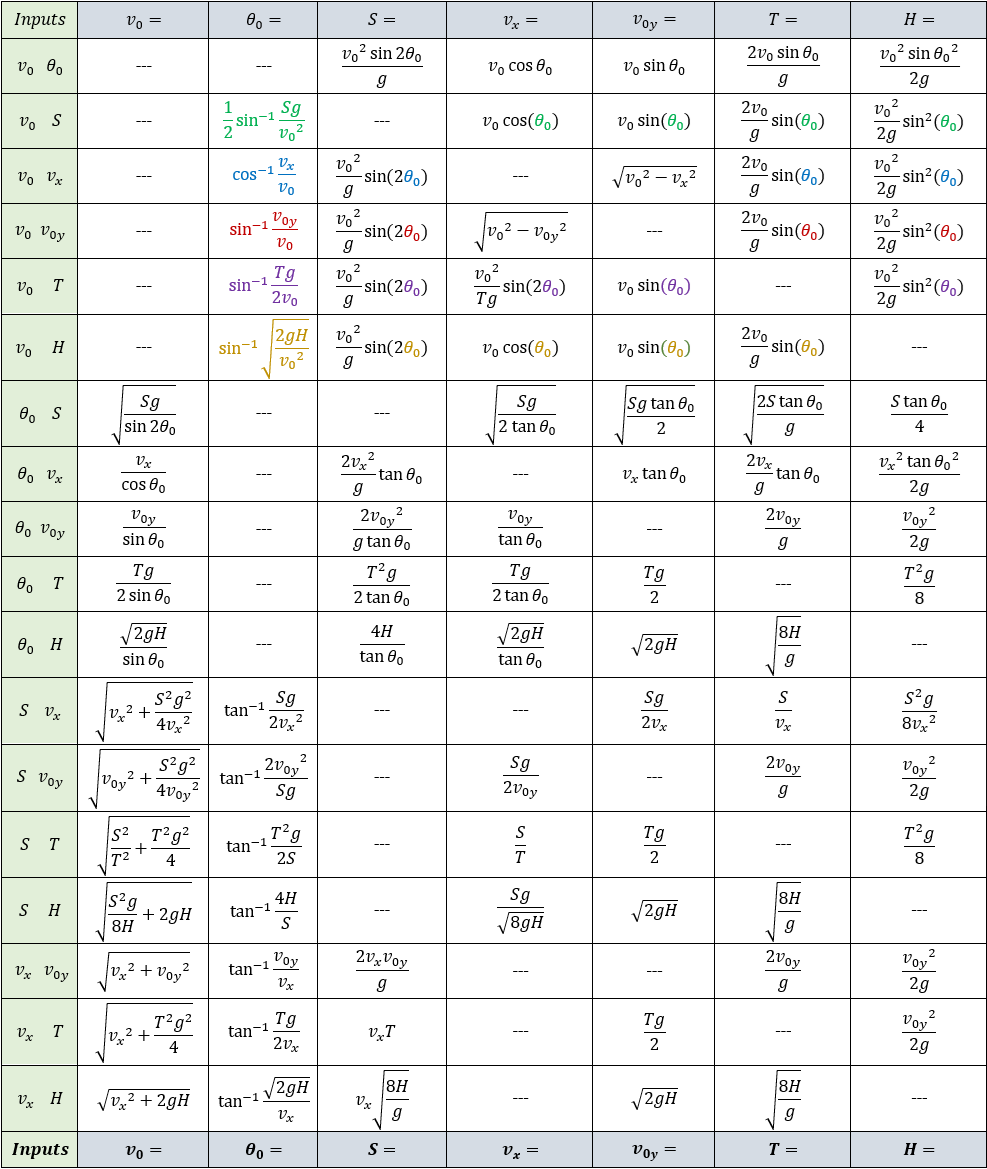Projection parabola path equation


Calculations table of different inputs

**provide the relation between the x and y coordinates at any point of time in the motion of the projectile.

Example 1 - path equation
Find the trajectile motion equation, and find the elevation of an object after passing a distance of 200 m in the x direction if it leaves a nozzle at a valocity of 50 m/s and at an angle of 35°.
In the x direction the acceleration of the object is zero therfore the velocity is constant and is equal to the initial velocity multiplyed by cosθ:
vx = v0 cosθ0
The displacement in the x direction described by constant speed is:

the velocity in the y direction is the component of the initial velocity v0 in the y direction;

The vertical dicplacement is calculated according to the free fall equations and replacing h by the value y.


To establish an equation that the values of y and x are bound together, we will substitute the value of t from equation (1) into equation (2) to get the equation:



Example 2 - angle of projection
Find the angle that a catapult should fire an object at an initial velocity of 120 m/s2 if it should hit the ground at a distance of 1km away, the value of g is 9.8 m/s2.
From the projectile distance and vx we can calculate the flight time.

The flight time can be calculated from V0y and the fact that at the top the velocity Vy = 0 (the total flight time will be twice the value of t, because it contains the motion upward and then back to earth) therfore using the free fall equations we have:





